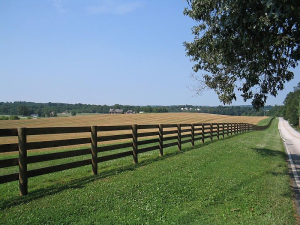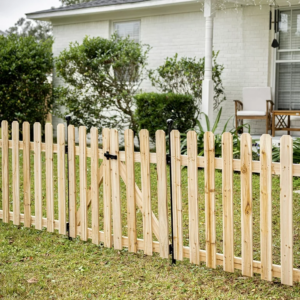Safety is paramount during clean-up after natural disasters. Protect yourself by wearing long pants, sturdy shoes, masks, and gloves. Avoid touching anything that may be contaminated by floodwater, mold, or other toxic substances. Watch out for downed power lines and stay away from them.
Rapid response disaster cleanup reduces risks, preserving valuables and sentimental items. It also cuts restoration costs by preventing escalation of damage. Contact Utah Disaster Cleanup now!

During natural disasters, water damage can be very common. It can be caused by floods, storms, or even from a broken pipe in a home or business. It is important to get the right help for this kind of damage, so it can be repaired quickly. Disaster cleanup services can help with this process by removing the water and cleaning up any damage that has been done to your property. They will also ensure that the area is dry and safe to use again.
When it comes to water damage, you need to know that the longer you wait to get help, the worse the problem will be. It can lead to structural deterioration and mold growth, which can cost you a lot of money in the long run. That is why it is so important to call disaster cleanup experts as soon as you notice any problems with your property.
It is best to avoid getting wet during a disaster, especially if you have an existing health issue or are pregnant. If you do decide to go outside, make sure you have good shoes and gloves. You may want to consider using a mask to protect yourself from any chemicals or sewage that could be present. Also, keep children away from areas that might be hazardous.
Restoring utilities is a top priority for restoration teams after a disaster. This includes restoring electricity, water, and gas. Often times, these items are damaged by storms and can be dangerous to touch.
Once utilities are restored, it is a good idea to test them to make sure that they are working properly. It is a good idea to use cold water rather than hot, as it will prevent potential illnesses from bacteria. It is also a good idea to test drains by pouring water into them. You can also test your water supply by putting a few drops of food coloring into the toilet tank and waiting to see if it changes color.
During the cleanup process, it is important to remember that emotions are going to be high after a disaster. It is important to take time to relax and do things you enjoy to help alleviate stress. It is also a good idea to stay close to family and friends during this time.
Fire Damage
Fire damage is devastating to families and businesses, not only because of the loss of belongings and structural damage but also because of health concerns caused by smoke inhalation and lingering soot and ash. In addition, wildfires can leave behind environmental problems from contaminated soil and water runoff to habitat destruction, wildlife loss and air quality concerns.
When disasters occur, the first step in the cleanup process is to assess the damage and determine what can be repaired or replaced. This requires careful attention to detail. Some materials, like charred wood beams, may be beyond repair, while others might be salvageable with the right cleaning methods. Then, the next step is to determine what can be restored using existing structures and materials or what will need to be rebuilt with new materials.
Once the immediate danger has passed and all evacuees have been safely relocated, people can return to their homes or business to begin the cleanup and restoration process. Safety is always top of mind during any natural disaster cleanup and the proper safety precautions should be followed to ensure the best results.
Disaster cleanup workers are exposed to a variety of hazards, including electrical shocks, burns, carbon monoxide exposure, musculoskeletal injuries, fatigue and stress, respiratory diseases, and hazardous waste and chemical handling. Working long hours under these conditions can lead to emotional distress and exhaustion, which increases the risk of further complications during the recovery period. Support from family members, local mental health professionals, and adequate rest and sleep schedules is known to help prevent stress-related problems for disaster cleanup workers.
Many different things can cause fire damage, from faulty wiring to unattended candles. Often, fire damage is the result of an uncontrolled fire that is caused by something else and then starts spreading quickly. A fire damage assessment should identify the source of the fire so that it can be prevented in future disasters. This can be done by checking for any fire-resistant building materials that were damaged in the blaze, as well as looking at the structure to see how it was affected by the high levels of heat.
Storm Damage
The impact of a disaster can cause damage to homes, buildings and structures. The effects of storm damage can be wide-ranging, including structural damage, flooding, roof leaks, power outages and mold growth. Understanding storm damage allows individuals to plan for recovery and minimize potential risks.
After a storm, property owners should first take safety precautions to ensure that their family is safe and that the area can be assessed for safety hazards. If there are any unsafe conditions, they should wait until local officials say it is safe to enter their home and begin the clean up process.
It is also important to make sure that the appropriate safety equipment is worn when cleaning up after a disaster, especially in the case of flooding. This includes a hard hat, protective eyewear and heavy-duty work gloves. It is also recommended to wear long sleeves and pants if possible to protect skin from debris. Individuals should also be aware of any health concerns that may arise as a result of disaster clean up, such as contaminated water from overflowing sewer systems and the presence of mold.
In addition, individuals should be aware of any other issues that may affect their ability to recover from the aftermath of a storm. For example, severe storms may cause landslides that can block roads and cut off access to homes. If this occurs, it is important to contact local authorities for assistance and to stay informed via news updates on radio or TV.
As a final step, homeowners should be prepared to assess the storm damage to their home and determine what items can be salvaged and what will need to be thrown away. Items that are contaminated by water or mold should be washed and disinfected before being reused. This will help prevent further contamination and health problems.
If a homeowner does not have the necessary equipment or supplies to handle a clean up job, they should consider contacting a disaster restoration professional. These professionals can help them with the clean up process and provide advice on what steps to take next.
Debris Removal
Debris removal is a vital part of disaster cleanup. It is necessary to eliminate immediate threats to public health and safety, to protect unimproved property and to facilitate economic recovery in affected communities. It is often a complex task, requiring significant coordination and cooperation between many agencies and private contractors.
Generally, home and business owners are responsible for debris removal from their own properties, though insurance settlements may provide financial assistance. However, when a community is affected by a natural disaster that generates a large amount of debris, local governments often take on the responsibility of clearing and removing debris in public rights-of-way. When the debris is located on private property, it is the responsibility of the homeowner to remove and dispose of it in accordance with local guidelines and regulations.
In some cases, homeowners and businesses can be reimbursed for the cost of debris removal by FEMA through its Public Assistance program. FEMA representatives will conduct a Preliminary Damage Assessment to evaluate the extent of damage and determine eligibility for funding.
Once the debris removal process has begun, local officials will establish a Debris Management Team (DMT) to manage the operations and coordinate with state and federal representatives regarding operational issues. The DMT will develop a mission Management Plan and scope of work, and will then prepare a Request for Debris Removal Assistance (RFRA).
Depending on the type of debris, safe management options may include open burning/incineration, recycling, chipping and grinding, or composting. Using any of these methods can reduce the volume of waste by up to 75%. The remainder is typically disposed of in a landfill.
It is important to note that disaster debris can contain hazardous constituents, such as household hazardous waste or sewage. If this is the case, it must be handled with caution and disposed of properly to avoid contamination of soil or groundwater.
It is also important to note that the DMT will determine where and when debris disposal sites will be located, as well as how much debris will be moved from one site to another. The DMT will maintain records of the volume of debris removed, including units reported in cubic yards or tons.


